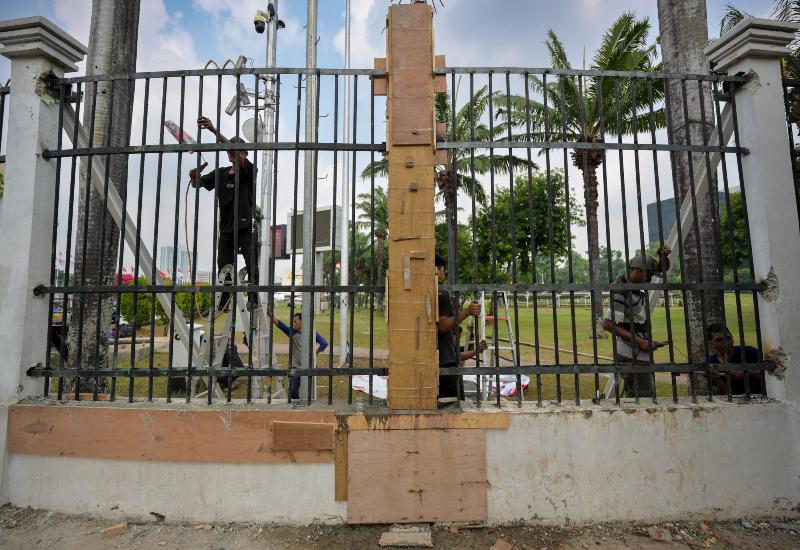A Closer Look at Iron, a Preferred Fencing Material
What Makes Iron a Preferred Fencing Material?
When you are installing a fence, you will be faced with a wide variety of options in terms of fencing material. While every type of fence has its place, from picket to chain link, if you are looking for a fence that is durable and attractive, providing curb appeal and security at the same time, it pays to invest in an iron fence. Iron has been used in construction projects for hundreds of years, and some centuries old iron fences are still in use today. Let’s take a closer look at the benefits of iron as a fencing material.

What is Iron Fencing?
The fourth most plentiful element on earth, iron is strong, yet easier to work with than some other types of metal. It can be heated and worked into an array of shapes, which is what makes it so popular as a type of fencing. Since the colonists arrived in North America, iron has been used in construction, valued for its durability and malleability. Iron fencing comes in a variety of styles, from simple iron rod fences to intricate wrought iron fences, and it is inherently customizable, making it appropriate for every style of home.
Types of Iron Used in Iron Fencing and Gates
The iron used to protect your property is durable and strong, able to withstand the elements and keep out intruders. Iron fences can be wrought iron, which is made of an iron alloy and worked into shape, or cast iron, which involves pouring molten iron into molds. However, many fences that are sold as wrought iron are actually made from other metals. A fence made of steel, for example, can mimic wrought iron at a lower cost. These fences, however, won’t have designs as intricate as those made of true wrought iron.
Benefits of Installing an Iron Fence
When you are comparing different kinds of fences, there are several factors you will want to consider. The first is durability, and iron is a top choice in this category, because it is naturally strong and resilient. It can stand up to violent storms, howling winds, and blazing sunlight without sustaining damage or deteriorating. With the proper maintenance, in fact, an iron fence can last 50 years or more. In terms of security, an iron fence wins in this regard, too. Iron fences feature vertical pickets that are hard to climb, often with decorative spikes on the top of the fence for further deterrence. They can be made to any height desired, and they offer good visibility, which is another consideration when choosing a fence for security. Finally, iron fences are extremely attractive, and can be customized to your specifications, in order to live up to your aesthetic sensibilities.
The Difference Between Iron Rod Fencing and Wrought Iron Fencing
Once you have decided on an iron fence, which type of iron fence will you choose? Iron rod fencing and wrought iron fencing may sound the same, but they have some key differences. The term “wrought” means “worked” and so wrought iron is iron that is worked into shape after having been heated. The heating removes most of the carbon, and makes the metal tough yet flexible. Rod iron has a higher carbon content, and is shaped into thin rods. It isn’t refined or worked by hand like wrought iron, and is used in simple, not decorative designs. Rod iron is good for purposes that require basic strength and functionality, without particular style. Wrought iron is stronger than rod iron, and is also more resistant to rust.
Tips for Iron Fence Repair and Maintenance
Even the most durable materials have a vulnerable aspect and for iron, the weak spot is rust. Fortunately, keeping your iron fence in good condition is a matter of simple maintenance. If your fence is well-maintained, it will stand up to harsh weather conditions and stay attractive throughout its lifespan.
- Inspect and clean your fence regularly. Use a soft brush or sponge with a mild detergent solution to wipe off any debris or organic buildup, and rinse thoroughly to remove any soap residue.
- Address any rust spots immediately. If you notice any sign of rust on your fence, use a wire brush or sand paper to gently remove it. Once you have gotten rid of the rust, protect the spot by using a primer and paint designed for metal surfaces to cover the sanded spot and prevent future rust growth.
- Protect it with a finish. Especially if you live somewhere humid, a protective finish like a paint or powder coating will help prevent rust and corrosion.
- Stay ahead of repairs. As you are inspecting the fence, look to see if any screws, bolds, or other components are loose. Tighten them, and have any bent or broken pieces of fence repaired or replaced as soon as possible.
- Keep the fence lubricated. All hinges and locks should be lubricated regularly, so that they will not stick or become tricky to operate.
For a High-Quality Iron Fence, Contact A-1 Fence Inc.
When you’re ready to put in a fence, trust A-1 Fence Inc. to install it and stand behind our work. We’re a locally owned and operated company with more than 40 years of experience, committed to providing fast and efficient work with a personalized feel. We’re fully licensed, bonded, and insured, and are proud of our reputation for quality work. For more information or a free estimate, contact us through our website.